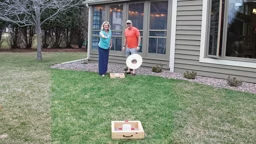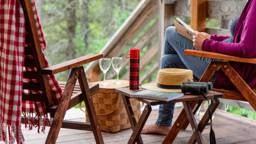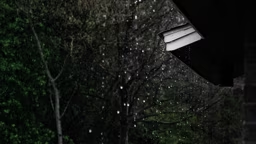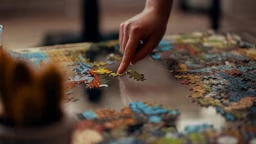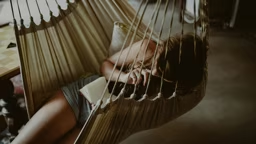As a mother of two school-aged kids, I developed a personal theory that 80 percent of parenting is in the marketing. If you were to announce, “Children, you’re going to run around for an entire afternoon using critical thinking and making your own fun,” you would get what’s known in the kid biz as “the face.” But say you’ve planned a scavenger hunt, and suddenly you’re a hero! (One who has, incidentally, arranged for an entire afternoon of running around using critical thinking and making your own fun.)
The beauty lies in the chase. By gathering found objects and puzzling out clues to find the next one, a scavenger hunt becomes a self-rewarding system with ratcheting stakes that keeps children engaged – and, with some luck, keeps you on the deck, cold drink in hand, watching the amusement unfold.
Let the Games Begin
Your hunt can be as intricate as you want it to be. On the low-impact end, it can be as easy as handing off a checklist. Or, if you’re the gung-ho type, you can go completely over the top with photo clues, ransom notes and codes written in disappearing ink.
Before you get too far, you’ll need to think through the ages of participants and setting up the teams with a fair distribution of ages. It’s also good to have a little pre-hunt pep talk about playing fair, staying within any given physical boundaries you care to set, and about listening to ideas from each member of the team to prevent ugly party mutinies.
Talking up some plunder can go a long way to ensure initial cooperation, too. My friend, Gail, likes to hide a cooler full of popsicles at the last clue location. Once you’ve settled on your own prize or reward – be it a treat or a coupon to get out of dish drying – it can be hidden, exchanged for a special coin or ticket discovered during the hunt or presented in high ceremony (complete with toilet paper tube trumpeting) upon verification of the completed scavenger hunt list.
Search Party
There’s more than one way to organize a hunt – and fancier doesn’t necessarily mean more fun. You can go old school with a list of items for participants to find. Objects can range from nature finds like acorn tops to sticks shaped like a letter of the alphabet. And now with digital cameras everywhere, participants can also gather up experiences to check off their lists – all you have to do is come up with scenes or sights that can be found and captured around your cabin.
Cipher’d
Clues are a great way to add in a little brain workout. Of course, it’s important to know your audience. The great thing about games you make yourself is they’re easily tailored to any audience. For example, even a very small child could figure out that a hand drawn picture of a letter means they should go to the mailbox. And as kids grow, so can the clues. Riddles can be easy, such as “where letters and magazines wait for you” to more challenging brainteasers like “I’m a box with words painted on it, but the letters are inside.” Not much of a clue-smith? Don’t worry, you can find clues like these by typing “riddles for mailboxes” in an online search engine and clicking around for a minute. Folding in some easy orienteering can boost the skill level – with or without a compass. Opening the mailbox, the awaiting clue could direct children to walk 2,000 paces toward the lake/minus the number on the box/plus the age of the dog/then turn the direction the sun sets until they reach a “portable place of rest” – a deck chair, holding the next clue. By the time they’ve figured all that out, you’ve read your new issue of Cabin Life twice.
Need more challenge? Code breaking lends intrigue and some sophistication to the fun. Leave a simple cipher key at a clue destination and require its use for a subsequent clue – like a letter to number code, braille chart or even instructions to look up the 57th word on page 12 of a favorite book.
Real Spy Kids
One particularly cold and rainy vacation when all the board games had turned into “I’m bored” games, I folded all my scavenger hunt elements into one big event for my then 6- and 8-year-olds. Upping the ante, I created a storyline by “kidnapping” a toy and creating a hostage scenario.
I called the children into CIA headquarters, which looked a lot like the kitchen breakfast bar, and broke the news that espionage agents had mistaken Barbie’s boyfriend “Ken” for a spy. In events too complicated to explain here, it became clear that if we didn’t get Ken back, other toys could be and most certainly would be well ... “compromised.”
Photo evidence of a bound and blindfolded Ken taken on my cell phone was presented to the now wide-eyed children. They were on a mission. With dramatic finesse, I pushed a cardboard briefcase across the counter. It was a kit containing fake mustaches, dark glasses, passports, pens and a cheap compass with a hand-drawn map. Also inside was a notebook with a few code-breaking keys and instructions on how to read disappearing ink. For one fleeting moment, I was a superhero.
The story took them through 10 or so clues, running them through the house to get their passport stamped, and decode frantic (pitiful, really) messages from Ken. Then it was outside to the woods and beach where they found a buried cache of two Nerf guns and a little walkie-talkie hanging from a tree. No one even noticed the rain.
Intercepting a mysterious radio transmission, my spy kids learned the secret location of the hostage was ... dramatic pause … the spare bedroom. There, another toy, a stuffed animal previously named “Fluffy Rabbit” but now going by the handle “Sinister Bunny” (See, you could tell he was sinister because of the angry, slanted eyebrows I had scotch taped onto his fur) was guarding poor, terrorized Ken. Three or four direct hits with a stunning Nerf dart later, it was “Bunny down!” – and Ken was a freed action figure.
To be fair, I invested a few hours pulling this together. But for the rest of the week, the children riffed on the original story line creating their own, far more creative variations. And two years later, they still talk about that cold, rainy vacation … the one that was so much fun.
Lucie Amundsen, a Minnesota-based writer, does not do children’s parties.




